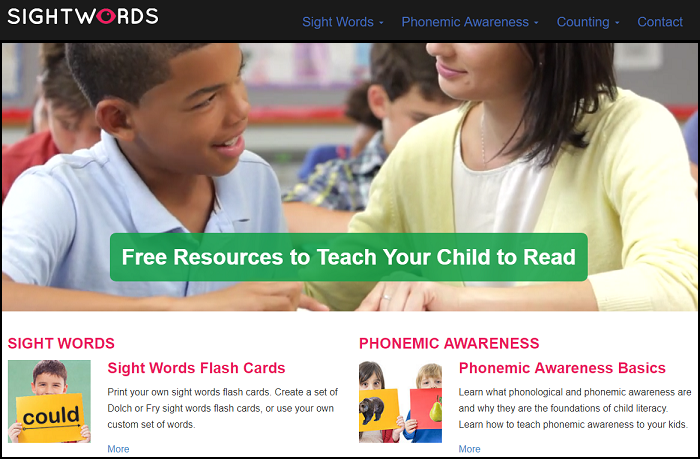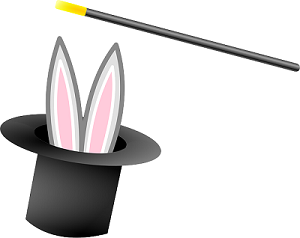- MN ABE Connect
- Archive
- Intentional Phonics Magic
 April 18, 2019
April 18, 2019
Intentional Phonics Magic
Kristen Cairns and Amy Reisdorf Marn Frank, Literacy & STAR CoordinatorThis final collaborative article of the year describes how several Columbia Heights/Fridley teachers and volunteers are working together to provide phonics lessons to small groups of ELLs.
 The lead “magicians” are Kristen Cairns, a dedicated volunteer (and now ESL teacher) with foreign language teaching experience and ESL certification, and Amy Reisdorf, her creative and supportive STAR-trained teacher.
The lead “magicians” are Kristen Cairns, a dedicated volunteer (and now ESL teacher) with foreign language teaching experience and ESL certification, and Amy Reisdorf, her creative and supportive STAR-trained teacher.
The students who participate in phonics lessons are at NRS Intermediate and Advanced ESL levels. They have a wide variety of language and educational backgrounds. Some never finished elementary or secondary education; others have PhDs from their native countries. Their commonality is English letter-sound (or phonics) gaps identified through the Word Reading Test and/or Sylvia Greene’s Informal Word Analysis Inventory, which you can find in the Diagnostic Reading Assessment section of the Reading resource library on the ATLAS website.
Kristen duplicates and organizes all phonics instruction and practice materials. She mostly uses MN ABE home-grown resources such as Story by Story (https://www.ldaminnesota.org/services/educational-products/), Teaching Analogy Phonics (https://atlasabe.org/resource/teaching-analogy-phonics-tap-2015/), and Phonics: Listening & Fluency (contact [email protected]).
She creates student packets with short texts, letter-sound practice activities, and a checklist for tracking student learning. As needed, she supplements with printable flashcards (found at https://sightwords.com/) and other online resources. She mostly follows a logical phonics sequence that progresses from simple to complex, common to less common, and predictable to unpredictable or irregular:
- Single consonants
- Short vowels
- S blends
- Long vowel + silent e
- Consonant endings and digraphs
- More consonant blends and clusters
- Long vowel teams or digraphs
- R and l controlled vowels
- Glided vowel teams or diphthongs
- Less common blends and trigraphs
- Irregular consonant and vowel patterns
Intentional phonics lessons are provided on Mondays and Wednesdays from 10-11 AM. Some students attend faithfully, others when they can, and a few arrive late. Kristen and her volunteers integrate all students into the day’s lesson and provide frequent and positive feedback. They communicate regularly in a notebook about taught lessons. This guides their day-to-day or week-to-week decisions to reteach or review difficult sounds or move ahead. As requested by Amy, they also provide lessons specific to troublesome patterns or words from class contexts. In addition, students are encouraged to practice phonics skills outside of class using Moby Max or Burlington English.
According to Kristen and Amy, regular participation in phonics lessons and online practice has resulted in overall reading progress because students are not stalling out due to gaps in their English phonics knowledge. They are also more familiar with phonics language and thus, more comfortable asking for help with word reading challenges. They hope end-of-the-year retesting will capture improvements in word reading grade levels and application of phonics knowledge.
Thank you, Kristen and Amy, for sharing your intentional phonics magic and success!

Newsletter Signup
Get MN ABE Connect—the official source for ABE events, activities, and resources!
Sign UpArticle Categories
- ABE Foundations/Staff Onboarding
- ACES/Transitions
- Adult Career Pathways
- Assessment
- CCR Standards
- Citizenship
- COVID-19
- Cultural Competency
- Digital Literacy/Northstar
- Disabilities
- Distance Learning/Education
- ELA
- Equity/Inclusion
- ESL
- HSE/Adult Diploma
- Listening
- Math/Numeracy
- Mental Health
- Minnesota ABE
- One-Room Schoolhouse/Multilevel
- Professional Development
- Program Management
- Reading
- Remote Instruction
- Science
- Social Studies
- Speaking/Conversation
- Support Services
- Teaching Strategies
- Technology
- Uncategorized
- Volunteers/Tutors
- Writing